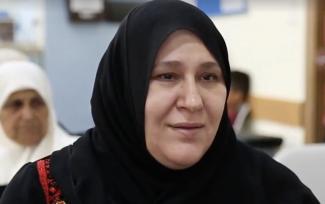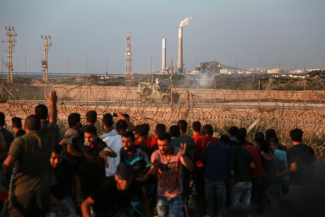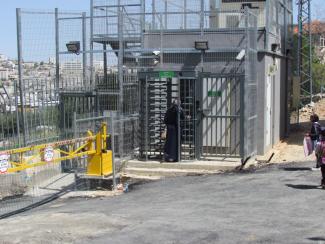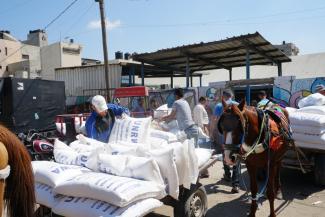Palestinians in Gaza who wish to exit the enclave can only do so through the Israeli-controlled Erez crossing or the Rafah crossing, which is controlled by Egypt. The Erez crossing is vitally important as it controls the movement of people between Gaza and the West Bank via Israel. Since the early 1990s, Palestinian residents of Gaza have required an exit permit to leave through Erez. Under a policy implemented since the beginning of the second Intifada in September 2000 - and tightened after June 2007, citing security concerns, following the takeover of Gaza by Hamas - only people belonging to specific Israeli-defined categories are eligible for an exit permit, subject to a security check.
The Monthly Humanitarian Bulletin | September 2018
The oPt Humanitarian Fund launched an $8.3 million allocation for the implementation of some critical but unfunded HRP projects, the majority in the Gaza Strip. Less than 60 per cent of applications for exit permit by patients seeking treatment outside Gaza were approved by the Israeli authorities in the first half of 2018. The continuous opening of the Egyptian-controlled Rafah crossing has been impaired by factors, including the reduced number of passengers allowed through and the obscure criteria used for selecting travelers. OCHA recorded 705 permanent checkpoints and roadblocks restricting or controlling Palestinian vehicular or pedestrian, movement across the West Bank.
In this document
Participants in the 27 September meeting of the Ad Hoc Liaison Committee (AHLC), the minister-level gathering of oPt donors, in New York, were unanimous regarding the disastrous humanitarian situation in the Gaza Strip. Among other remarks, The World Bank warned that the Gaza economy “is in free fall registering minus 6 percent growth in the first quarter of 2018, and an unemployment rate of 53 percent (over 70 percent for youth) … Given that every second person in Gaza lived below the poverty line before these latest developments, the deterioration is alarming.”
In July 2018, OCHA completed a comprehensive ‘closure survey’ that recorded 705 permanent obstacles across the West Bank restricting or controlling Palestinian vehicular, and in some cases pedestrian, movement. This figure is three per cent higher than in December 2016, the date of the previous survey. These obstacles are deployed by Israeli forces citing security concerns. The deployment of obstacles has become more flexible and, combined with the relatively low level of violence since the completion of the previous survey, has a less disruptive impact on the daily life of Palestinians travelling between Palestinian localities (excluding East Jerusalem and the H2 area of Hebron city) than previously.
Funding for humanitarian activities in the occupied Palestinian territory (oPt) is at an all-time low. At the end of September, only $159 million had been secured of a requested $539.7 million for the 2018 Humanitarian Response Plan (HRP), the multi-agency strategy and funding appeal for the humanitarian community in the oPt. Funding for the oPt HRP is at only 30 per cent, significantly lower than the current global average of 42 per cent.













